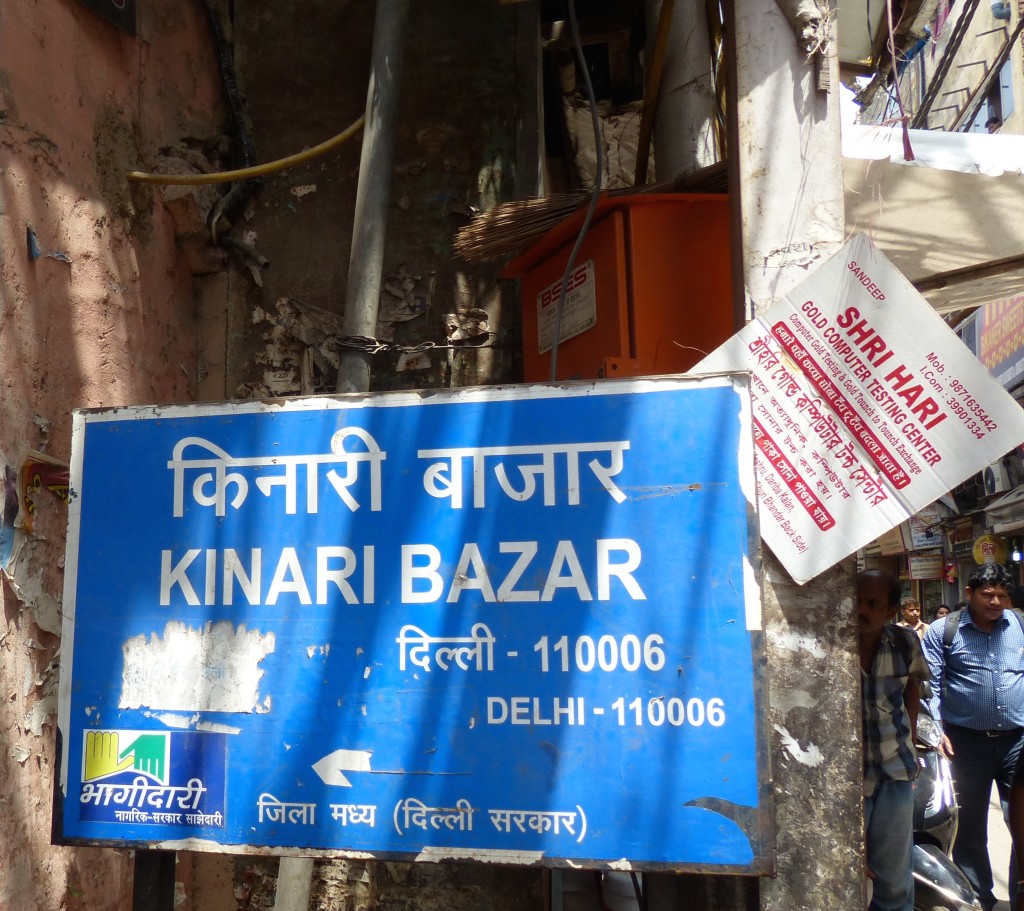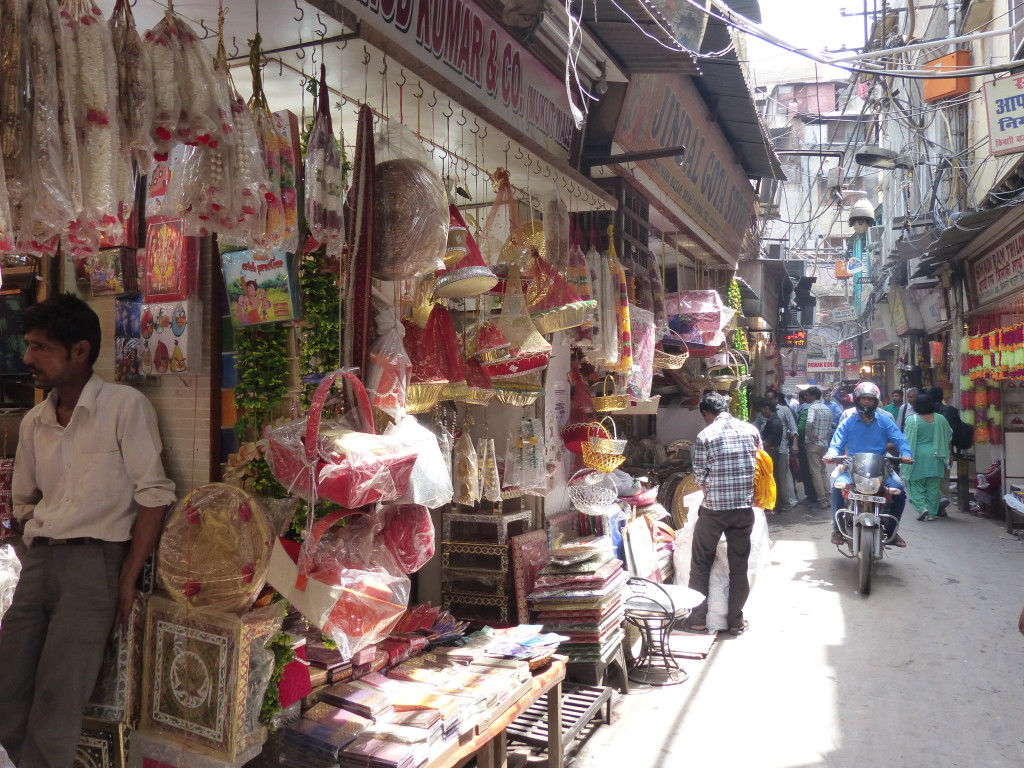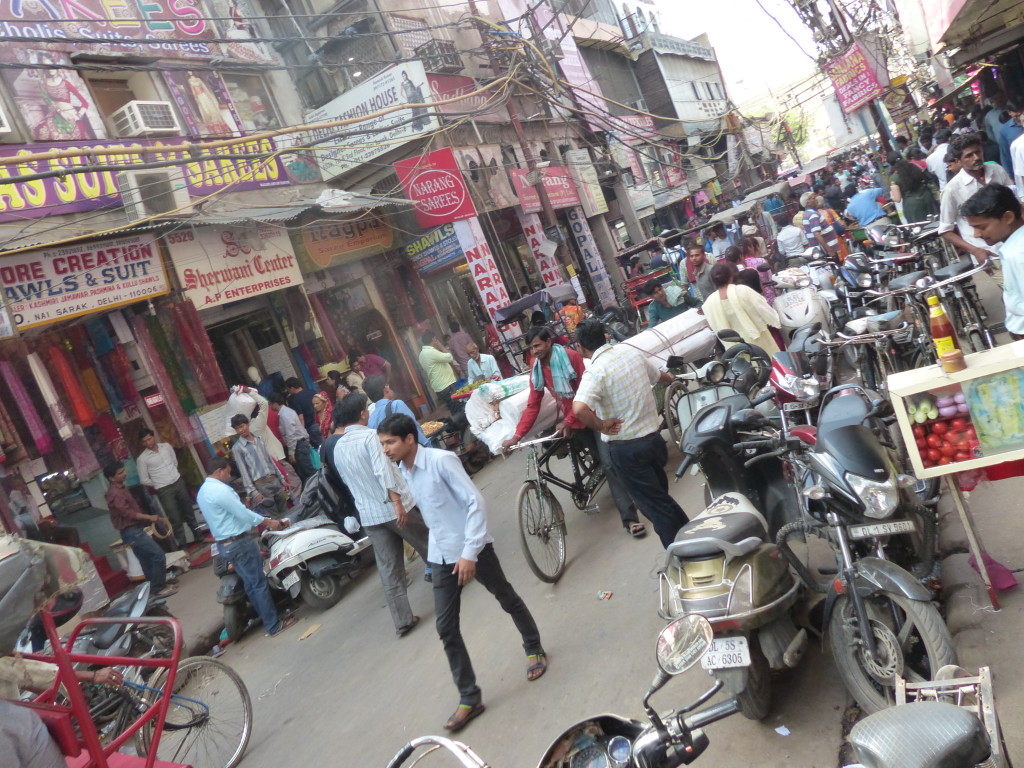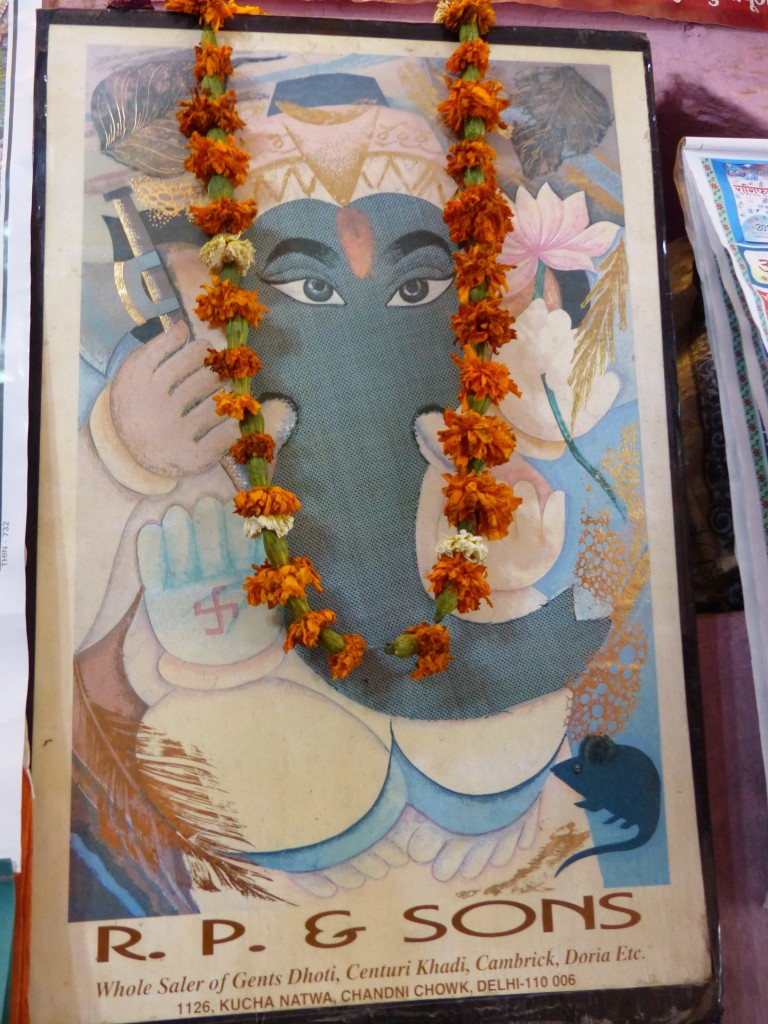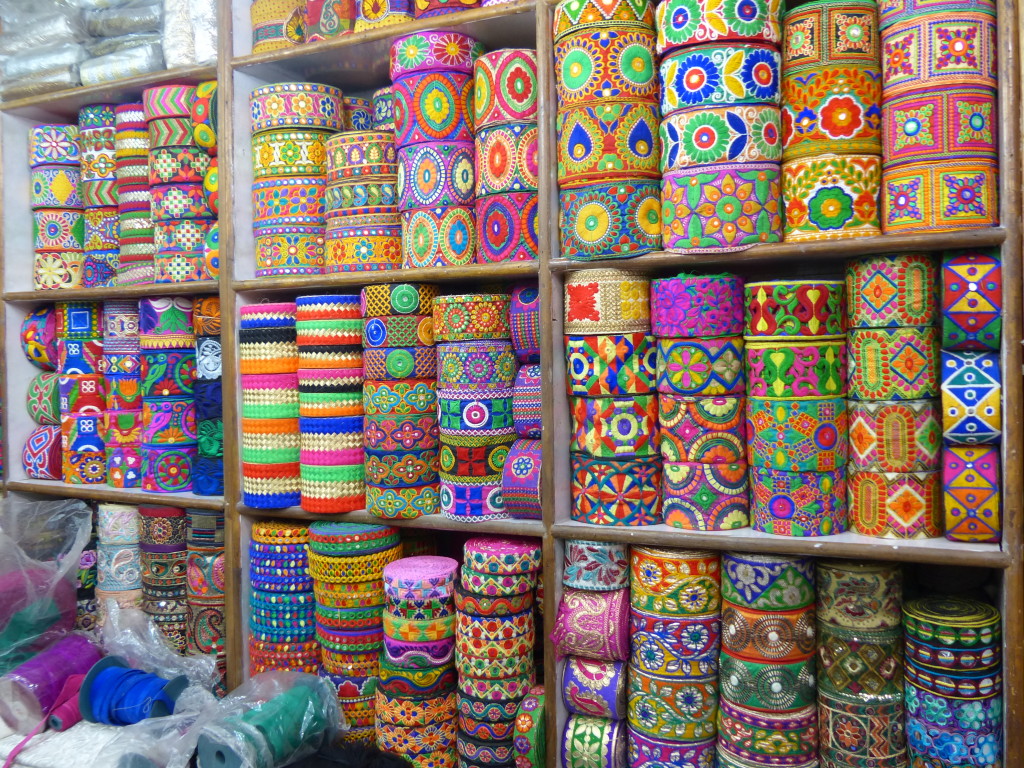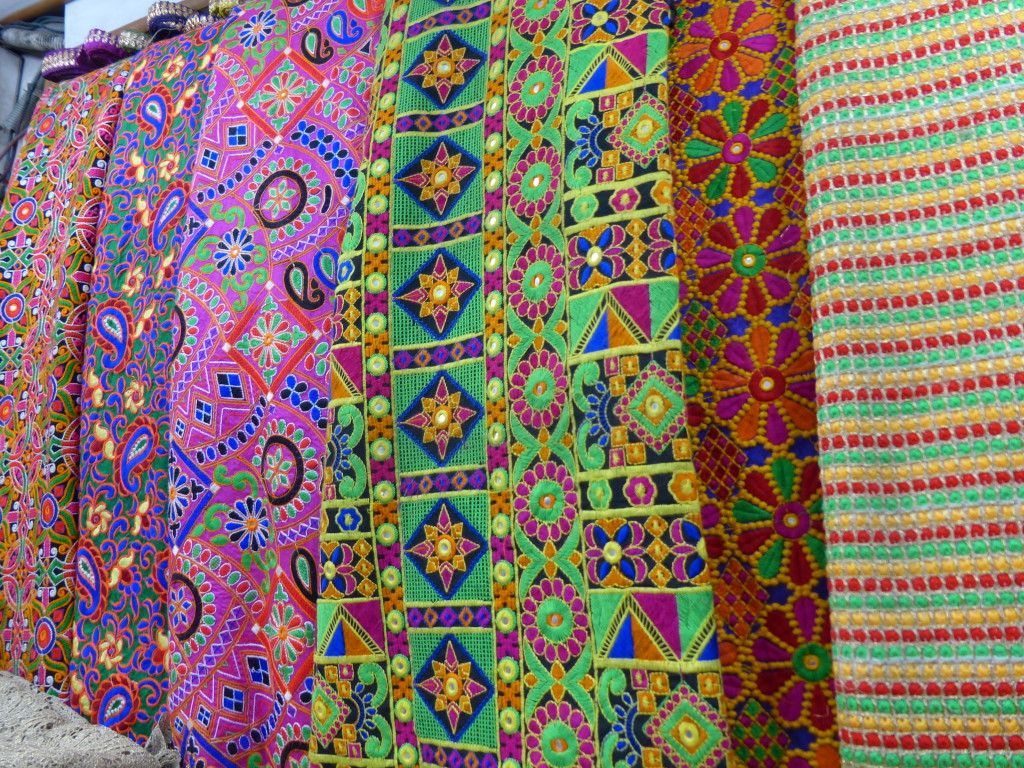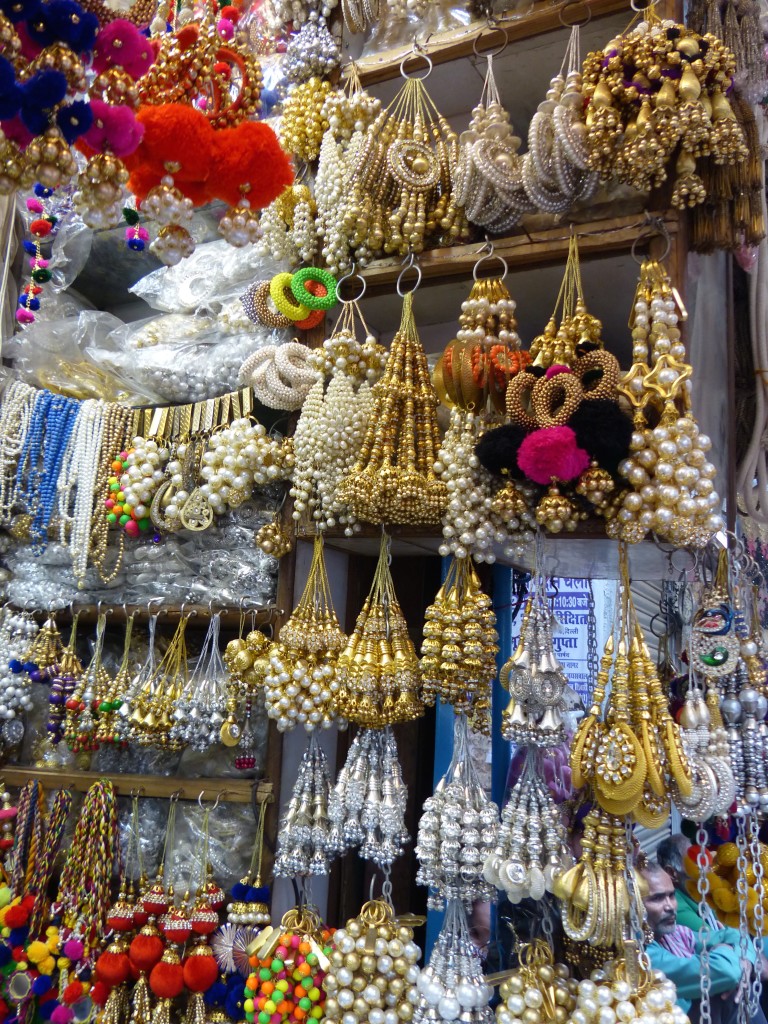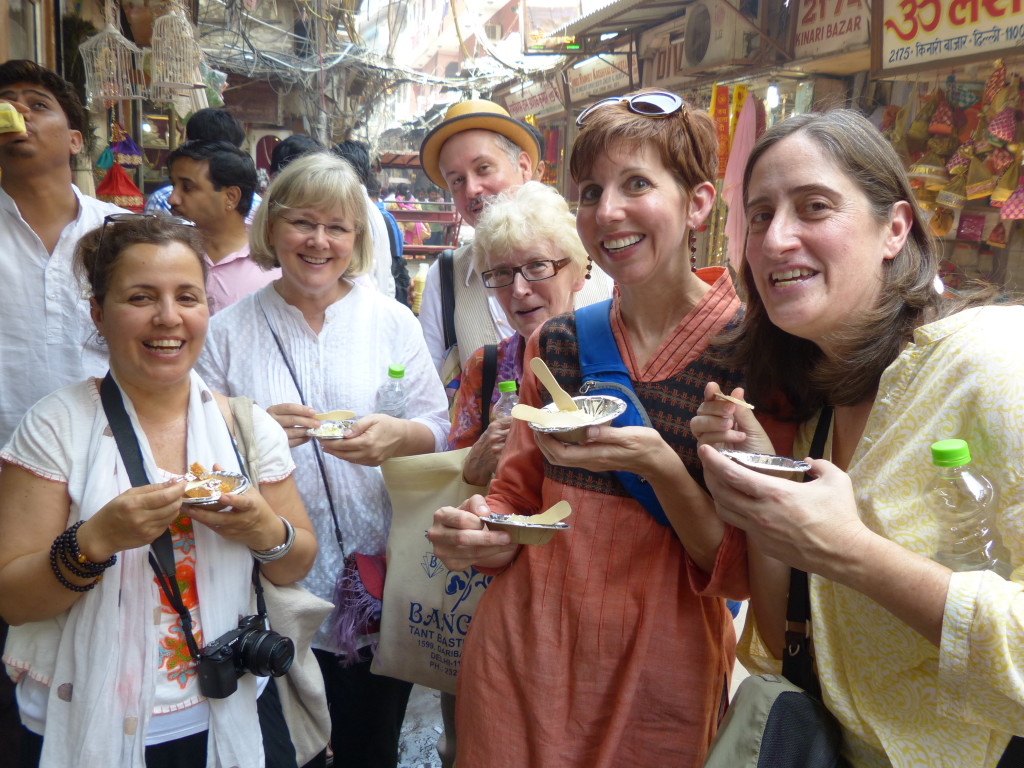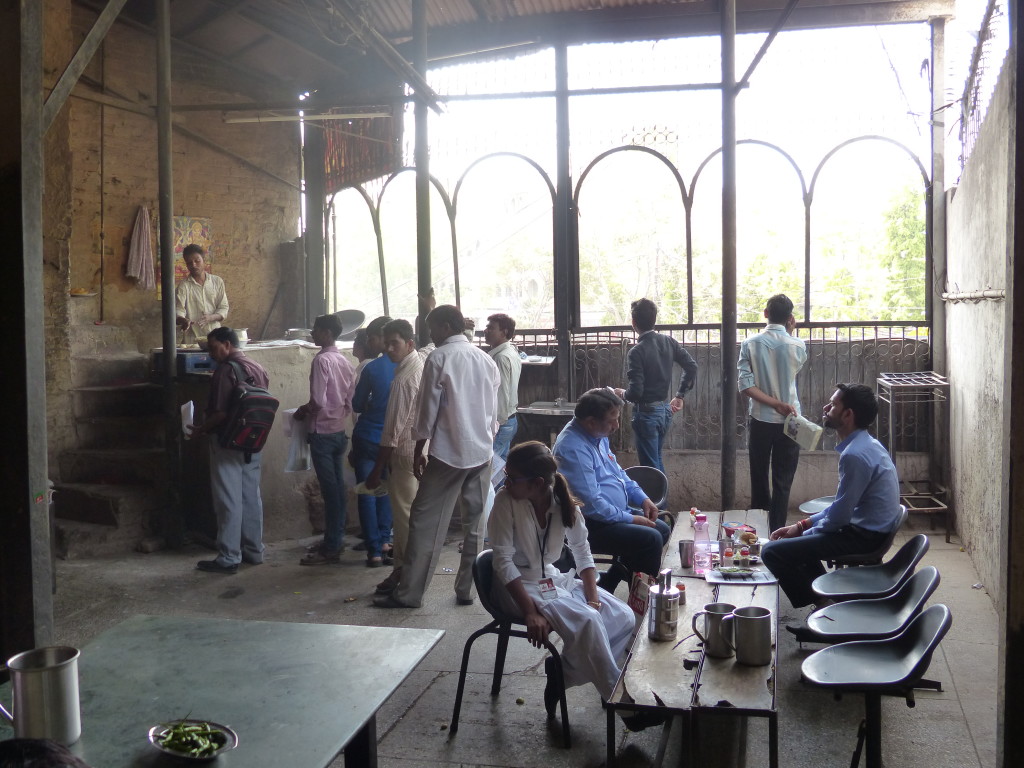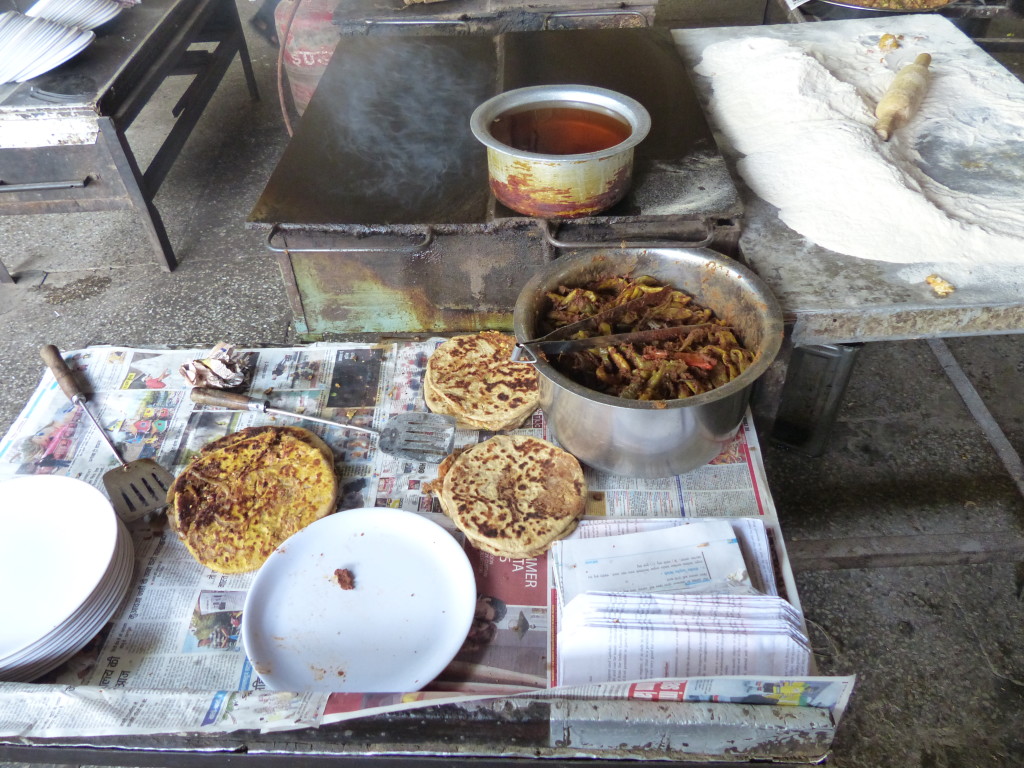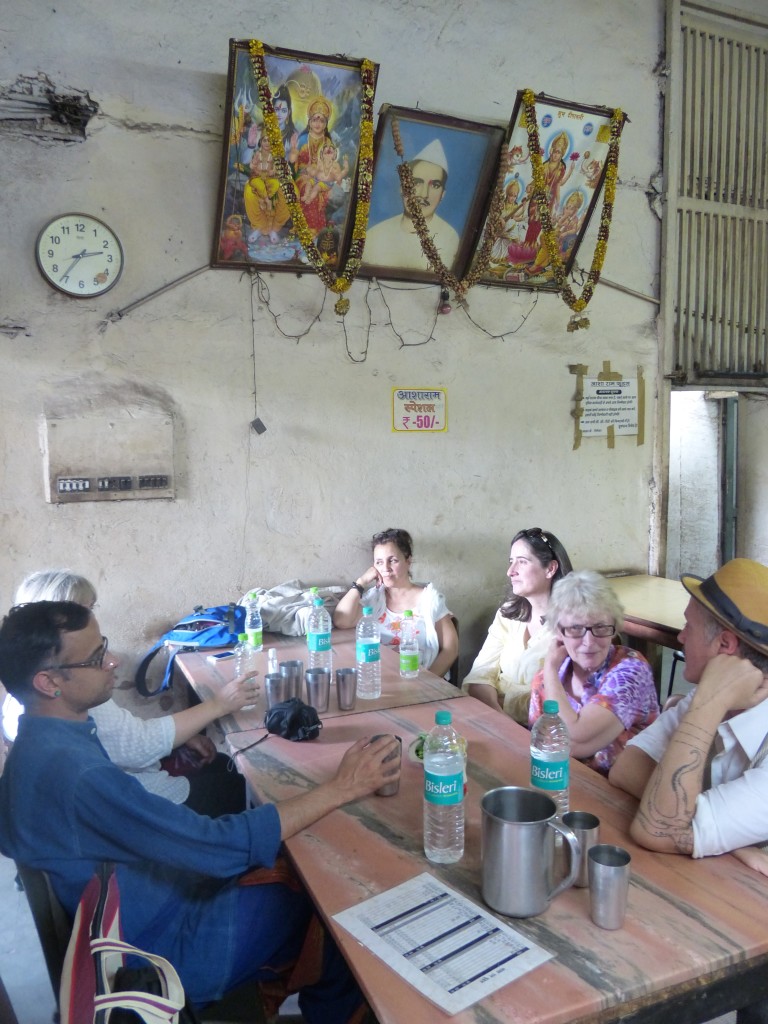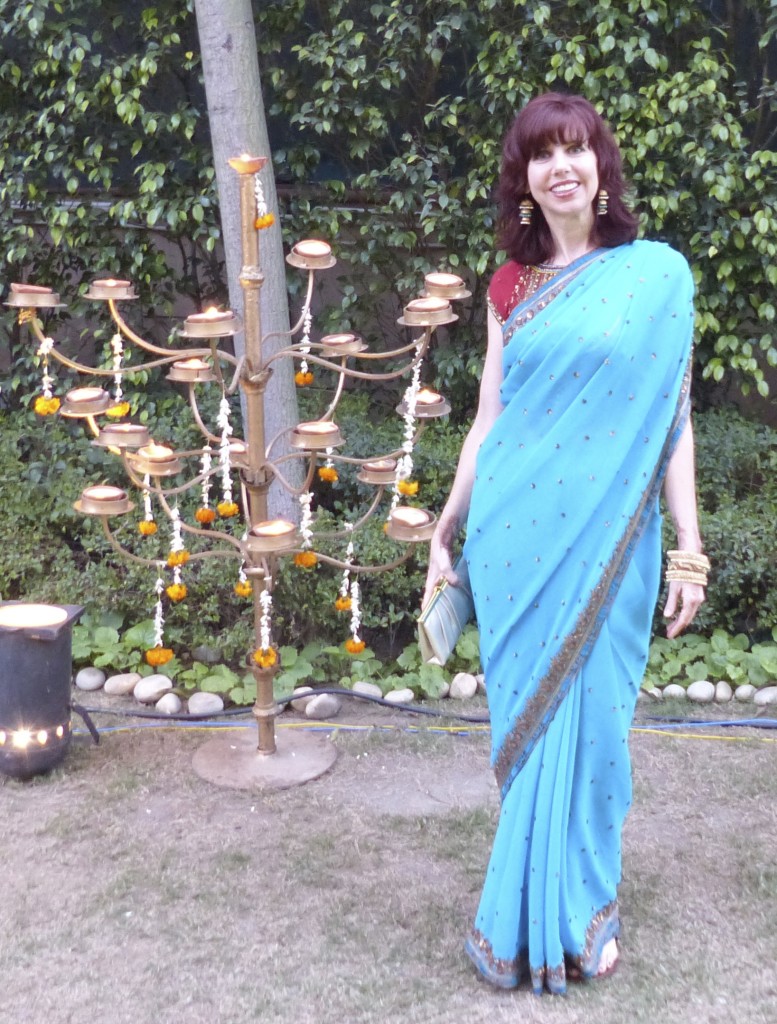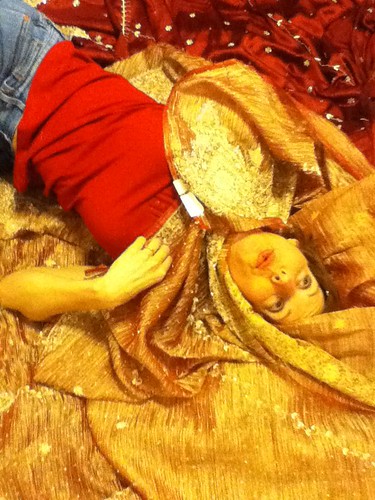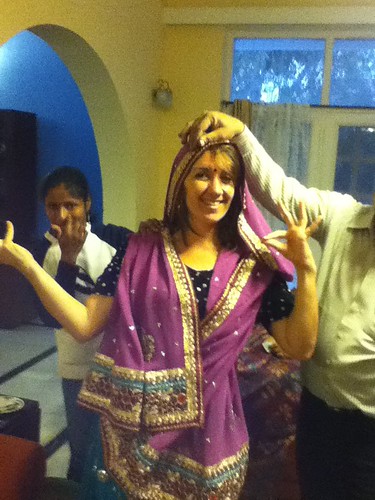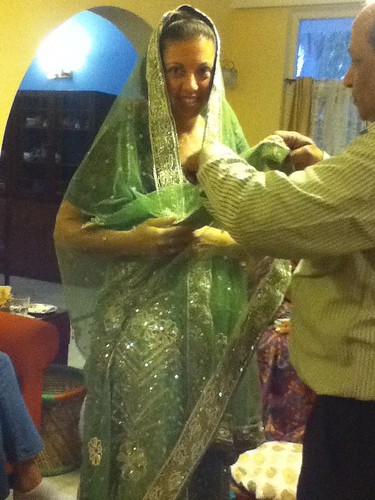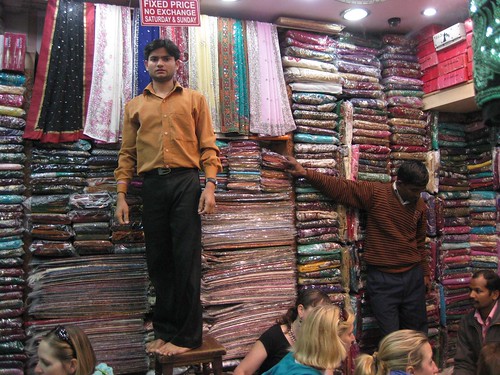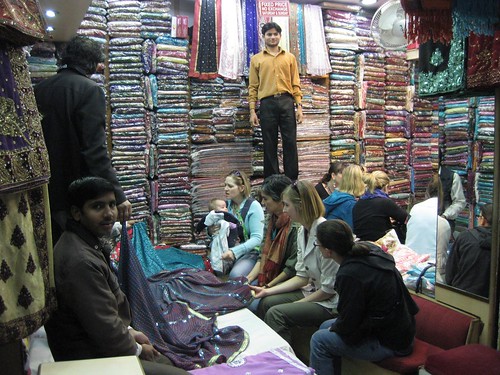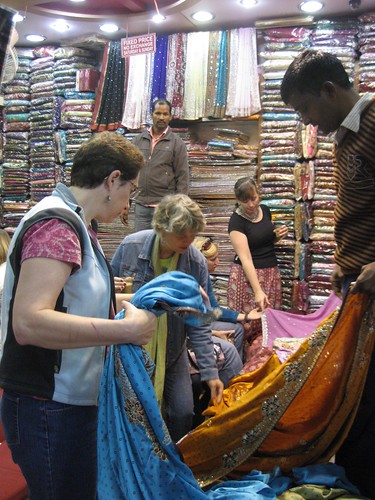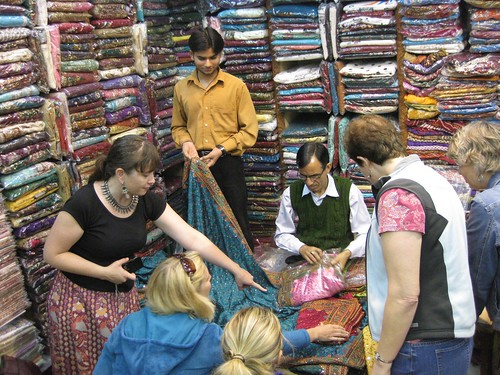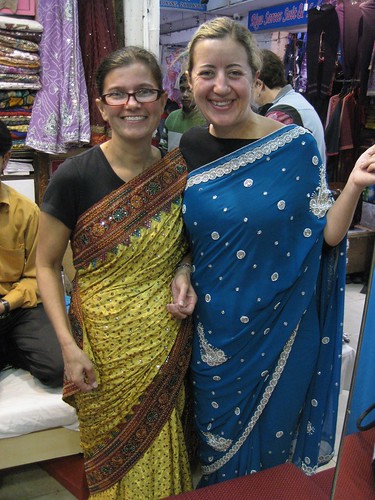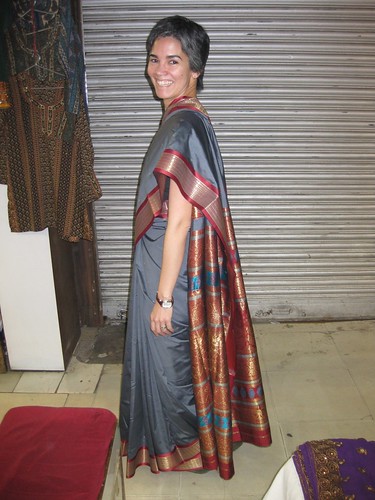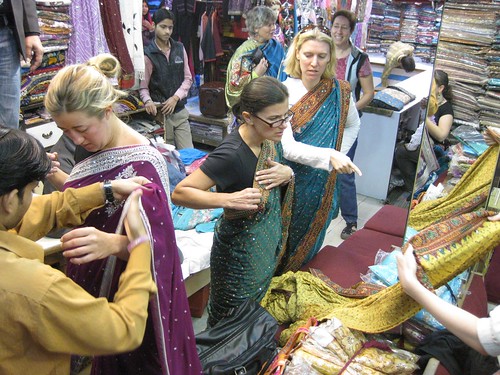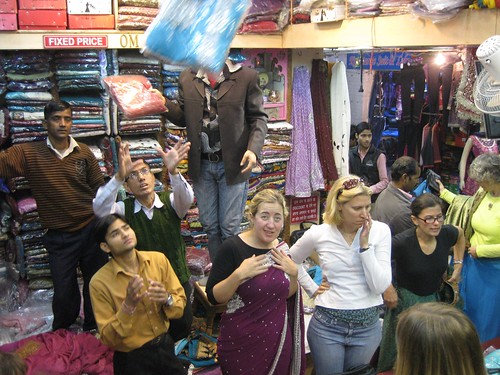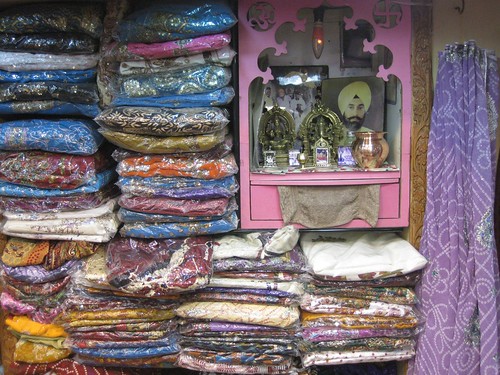I own two saris – a turquoise bedazzled number that caught my eye early on in India and which I now realize is cheap and gaudy, and a quality bright-orange hand-spun cotton one I purchased after a special afternoon at Sari School last year. Both sit in a closet, never used. I’ve only worn a sari once, and it was borrowed. Still, I remain entranced by the “unstitched garment.” That’s why I jumped at the chance to poke through Old Delhi’s sari market April 18 with one of my favorite tour guides, Himanshu Verma of Red Earth India, on his “Saari, Kinaari, Bazaari!” tour.
The ad for Himanshu’s walking tour said,
Chandni Chowk, the commercial centre of the city, presents a shimmering spectacle. On this Saree Walk, we will wander into Kinari Bazaar, the wholesale market for fabric trimmings and soak in this most colorful part of the city, where any saree can be accessorized with a relevant trim. A popular destination for bridal shopping, Chandni Chowk also offers us access to an array of Saree shops – from the hand-woven to bling and cheap synthetic sarees.
Himanshu took us into sari shops, including this tiny space.
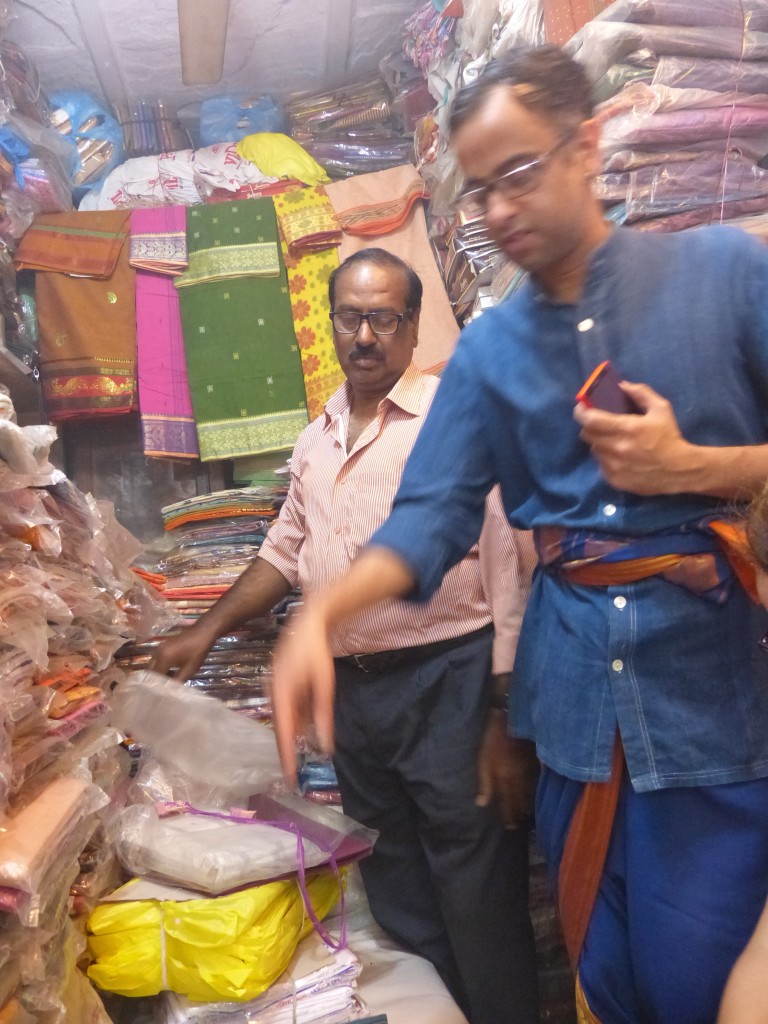
At larger stores, he helped us distinguish between hand-woven and machine-made, traditional and trendy, silk and synthetic sarees. It was all so interesting, but also overwhelming. Rather than shop for my own saree, I far prefer watching Indian women do so. Often, the whole family sits together on low stools while the shopkeeper unfurls the sarees. A baby sits on his father’s lap. A woman holds up the end of a saree to her chest and looks to her sister for approval. A grandmother reaches out to pull a saree closer for inspection while the shopkeeper shakes the next one out of its plastic package. The sarees drape across everyone’s laps and pile up on the table. Soon, the group is swimming in a sea of silk. Mesmerizing.
We also popped into several emporiums stocked from floor to ceiling with rolls of ribbon, lace and trim of every imaginable color and design for adding a kinari – or border – to a saree or other garment. Himanshu encouraged us to buy something fun to jazz up our clothes, and I eyed the collections with plans to add trim to a pair of jeans. In the end, I simply couldn’t commit to anything; I loved it all! However, now that I know where to find this stuff, don’t be surprised if all my western clothes get a touch of Indian flair.
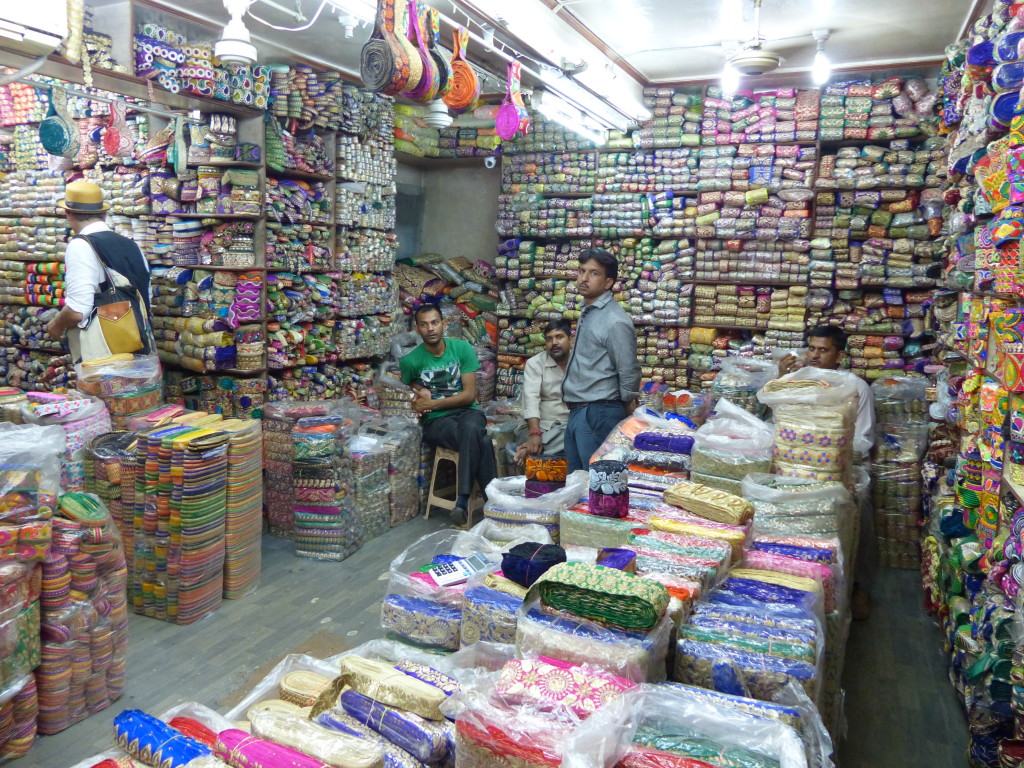
Our group paused for snacks a couple times at places we never would have tried without Himanshu’s trusted recommendation. This sweets shop offered up delicious milk-based desserts.
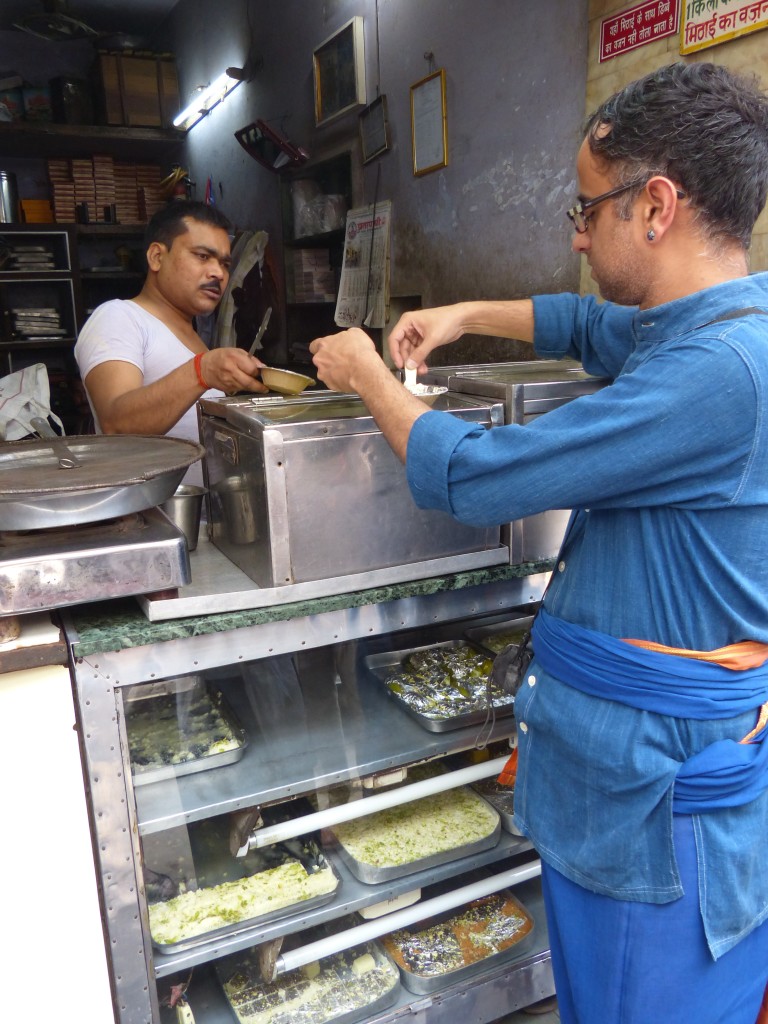
This man, whose little stand was unfortunately located directly across the narrow alley from an open urinal, whipped up golgappas, which are hollow crunchy balls filled with a watery mixture of tamarind chutney, chili, masala spices, potato, onion and chickpeas. He also served one of my favorite Indian street snacks – bhelpuri, a mixture of puffed rice, tamarind chutney and chopped veggies. Despite a momentary hesitation (no doubt triggered by the combination of the urinal smell and the sight of our snack-maker’s bare hands scooping the golgappa balls through the pot of water), we all gobbled up the treats and found them a bit spicy but tasty.
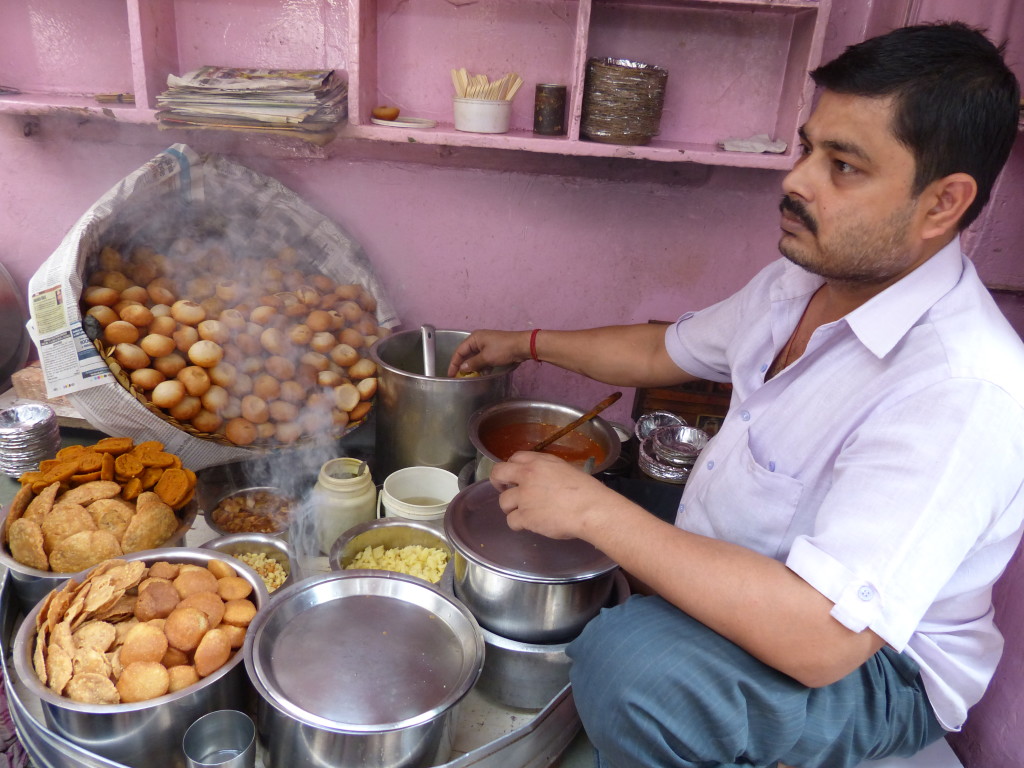
Eventually, Himanshu led us up a flight of dark narrow stairs to a busy eatery, where people lined up to get fresh bread straight from the tandoor. The breadmaker sat on an elevated structure and reached into the oven with long mental tongs to pull out the hot naan. We ordered paratha, a pan-friend flatbread stuffed with potatoes and spinach. Diners sat on cracked plastic chairs at long rickety tables; this was clearly not a place that catered to the hoity-toity expat crowd. In fact, I doubt any of us could find this place again. I always relish experiences like this, when I get a glimpse into the lives of locals in a way that doesn’t make me feel like a voyeur. It was pretty special, and the food was great!
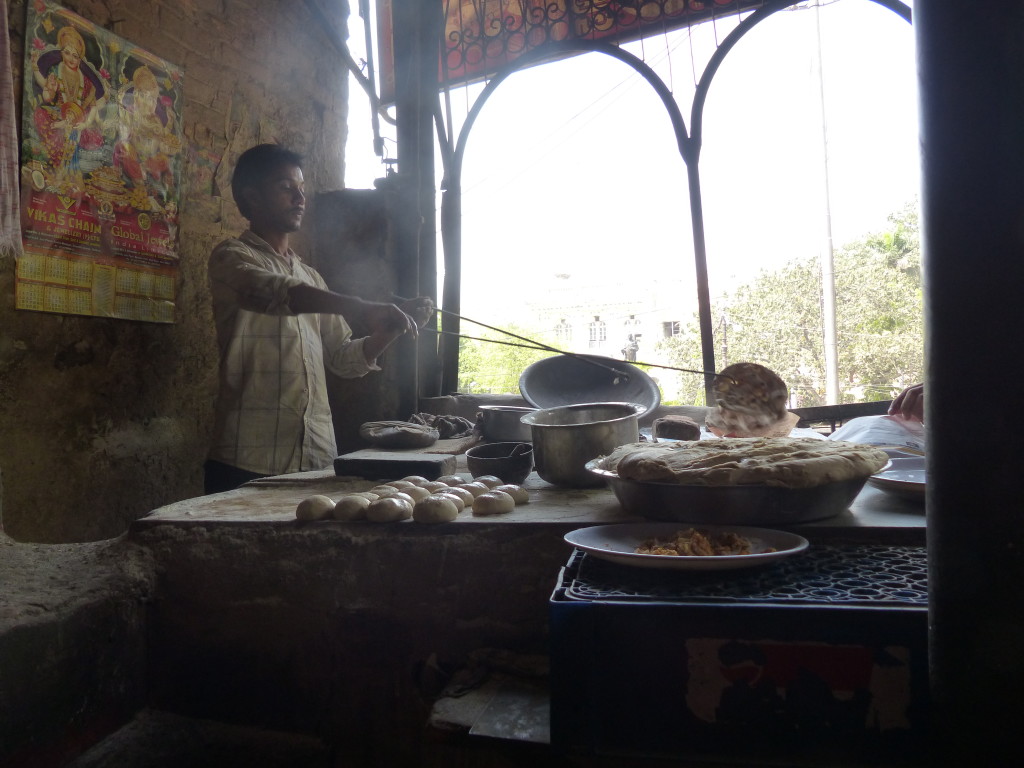
The labyrinth of Old Delhi can be daunting with its twisting alleys packed with pedestrians, motorcycles and bicycle rickshaws. Himanshu shared his expertise about the district and the iconic sarees, but he also brought a sense of curiosity and calm to a chaotic place, reminding us of its rich history and current relevance. I can’t wait to join him for another eye-opening tour.

